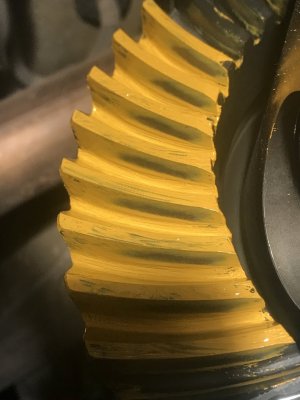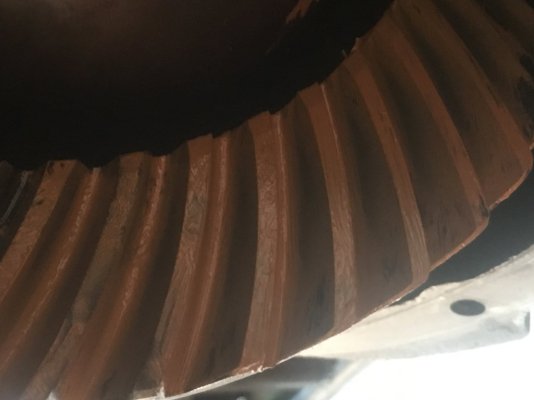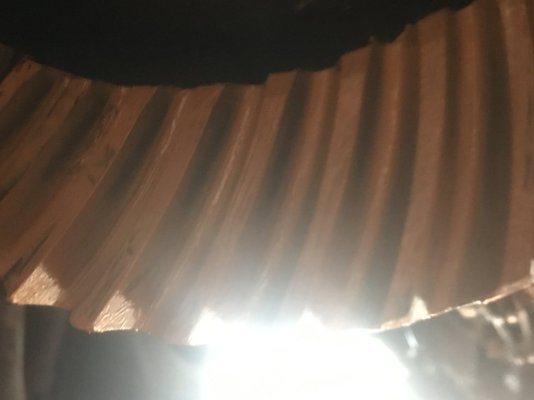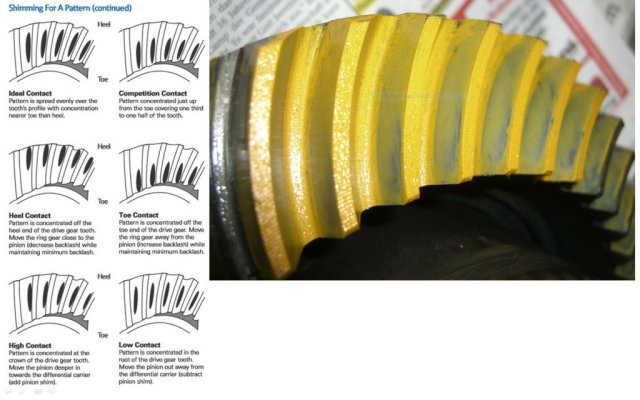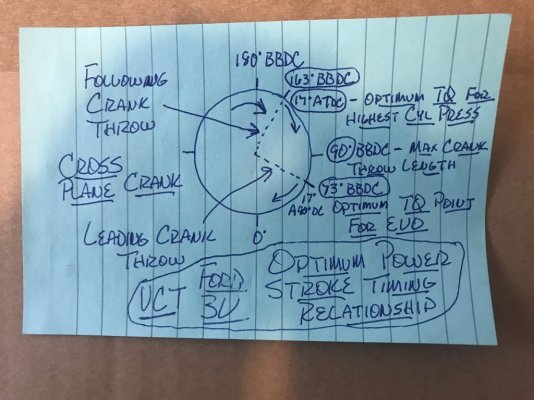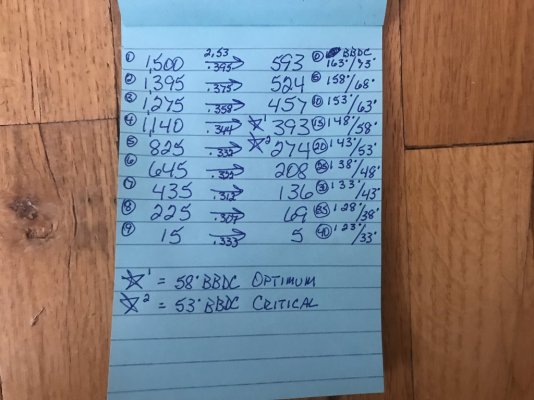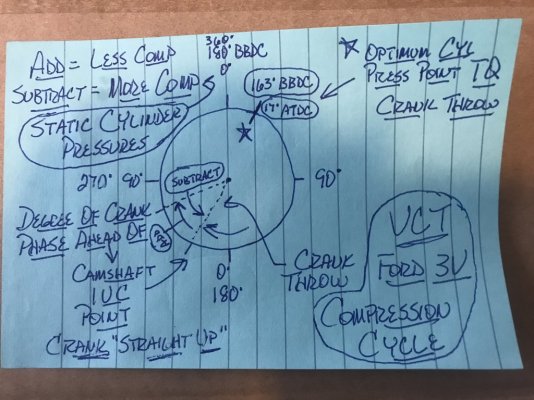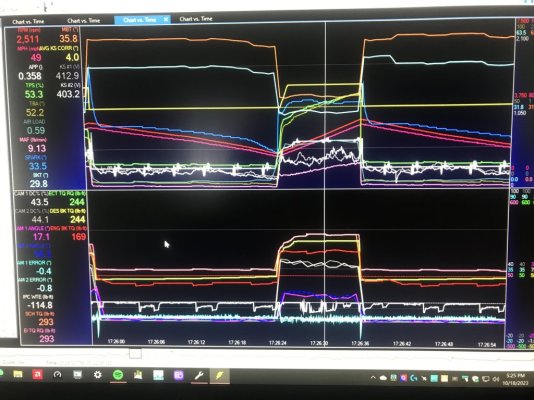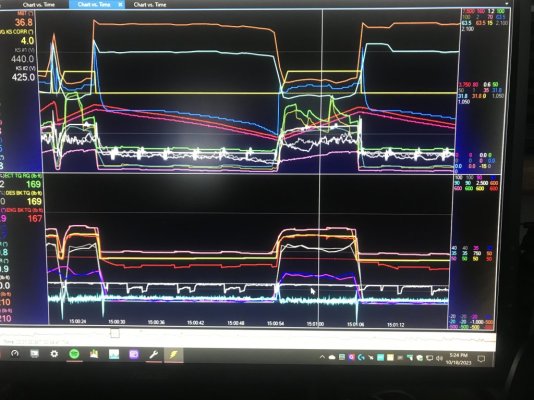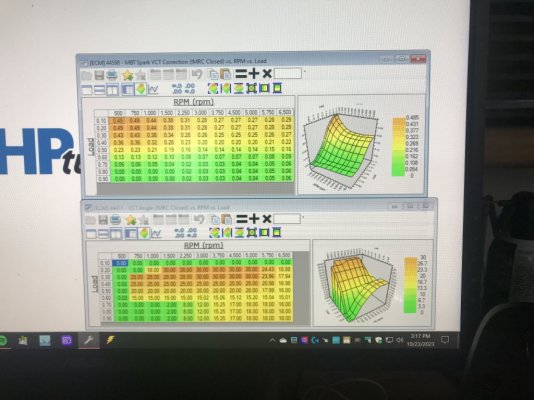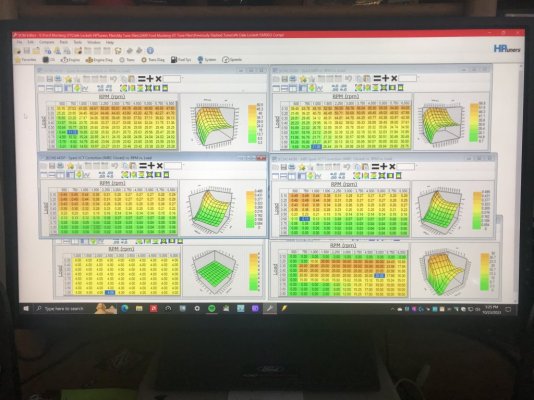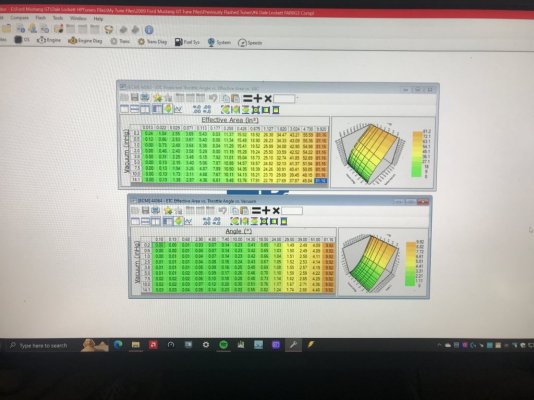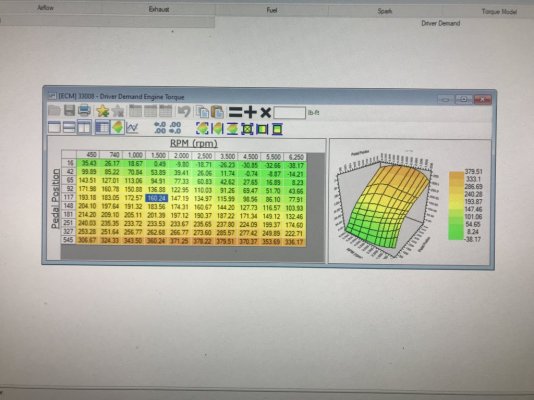GlassTop09
Senior Member
FYI..................
Here is a drawing of how this 3D Smoothing is applied:
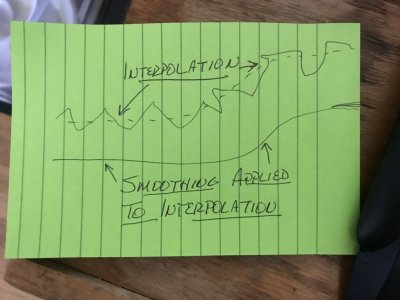 The software looks at the interpolated map settings (the solid line) to determine the underlying X-Y axis scaling (the dotted line), then will readjust the interpolated map settings (adding to all that fall below the underlying X-Y axis scaling line & subtracting to all that fall above the underlying X-Y axis scaling line) until all match up to the underlying X-Y scaling line so now the ECU will track along the actual underlying X-Y axis scaling line instead of tracking along the actual interpolated scaling line that was tracking along the underlying true X-Y axis scaling line.....thus the ECU tracking is "smoothed out" along the same map profile.......applied in 3D maps such as the knock sensor noise sensitivity threshold maps (also in several others as well) can give some tangible benefits that can be easily viewed on a datalog as follows:
The software looks at the interpolated map settings (the solid line) to determine the underlying X-Y axis scaling (the dotted line), then will readjust the interpolated map settings (adding to all that fall below the underlying X-Y axis scaling line & subtracting to all that fall above the underlying X-Y axis scaling line) until all match up to the underlying X-Y scaling line so now the ECU will track along the actual underlying X-Y axis scaling line instead of tracking along the actual interpolated scaling line that was tracking along the underlying true X-Y axis scaling line.....thus the ECU tracking is "smoothed out" along the same map profile.......applied in 3D maps such as the knock sensor noise sensitivity threshold maps (also in several others as well) can give some tangible benefits that can be easily viewed on a datalog as follows:
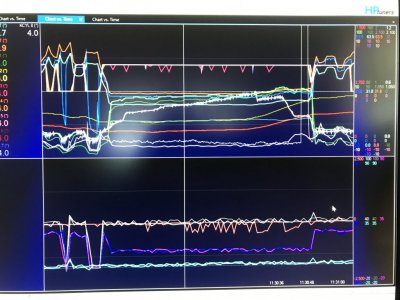
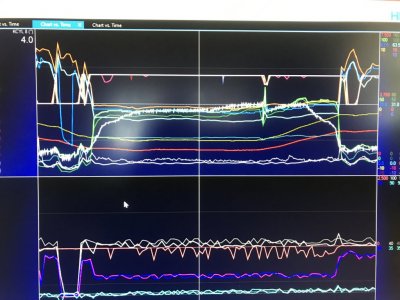
The picture on the left is showing a section of datalog that engine was under high load, low RPM operation climbing a very steep grade in 5th gear (intentional to test tuning under knock sensor control). As you can see, we're riding the very edge of the cyl knock sensor noise sensitivity threshold settings that hadn't had this 3D smoothing applied yet.......these results aren't bad at all......actually very good (knock is present only in 3 cyls....mostly #3 cyl w\ a couple in #5 cyl & a couple in #8 cyl for roughly a .5*\sec retard blip intervals.....this is the strength of using Per Cyl Knock Mode. Imagine how much more power would be cut if this was in Global Mode.......).
Now contrast this w\ the picture on the right.......from my last datalog showing engine was under the same high load, low RPM operation climbing the exact same steep grade in 5th gear but the same cyl knock sensitivity threshold maps used in the datalog prior had 3D Smoothing applied to them & nothing else in this 1 w\ all other settings in tune file untouched.......
Even w\ my tune set in Per Cyl Knock Mode, there is a clear advantage gained from applying this as this cleaned up the knock activity by a lot thus engine had more net available HP\TQ under the curve now than it did prior under the same engine loading conditions by allowing the ECU to more accurately "ride the edge". This is where it's at........the closer to the edge of knock you can ride w\o tipping over, the more available & peak HP\TQ can be squeezed out......safely. When this 3D Smoothing is also combined in all other maps as well you can potentially squeeze even more out & do it safely & efficiently on top of it all........while also improving the "driving feel" from engine available HP\TQ being very smoothly applied essentially across the board from very smooth ECU tracking thus calc's across all 2D & 3D map X-Y axis scaling data.
Yeah, some will call this nitpicking, but you can't deny the results either, no matter how small. When tuning for a living, this is the dilemma a tuner will face as this can be tedious & somewhat time consuming to do well initially thus a cost\benefit analysis vs profit.......at the same time, a consumer will want this level of tuning, but the issue of cost\benefit analysis also comes into play thus a consensus balance has to be worked out by both parties........
Posted for informational purposes.
Here is a drawing of how this 3D Smoothing is applied:
 The software looks at the interpolated map settings (the solid line) to determine the underlying X-Y axis scaling (the dotted line), then will readjust the interpolated map settings (adding to all that fall below the underlying X-Y axis scaling line & subtracting to all that fall above the underlying X-Y axis scaling line) until all match up to the underlying X-Y scaling line so now the ECU will track along the actual underlying X-Y axis scaling line instead of tracking along the actual interpolated scaling line that was tracking along the underlying true X-Y axis scaling line.....thus the ECU tracking is "smoothed out" along the same map profile.......applied in 3D maps such as the knock sensor noise sensitivity threshold maps (also in several others as well) can give some tangible benefits that can be easily viewed on a datalog as follows:
The software looks at the interpolated map settings (the solid line) to determine the underlying X-Y axis scaling (the dotted line), then will readjust the interpolated map settings (adding to all that fall below the underlying X-Y axis scaling line & subtracting to all that fall above the underlying X-Y axis scaling line) until all match up to the underlying X-Y scaling line so now the ECU will track along the actual underlying X-Y axis scaling line instead of tracking along the actual interpolated scaling line that was tracking along the underlying true X-Y axis scaling line.....thus the ECU tracking is "smoothed out" along the same map profile.......applied in 3D maps such as the knock sensor noise sensitivity threshold maps (also in several others as well) can give some tangible benefits that can be easily viewed on a datalog as follows:

The picture on the left is showing a section of datalog that engine was under high load, low RPM operation climbing a very steep grade in 5th gear (intentional to test tuning under knock sensor control). As you can see, we're riding the very edge of the cyl knock sensor noise sensitivity threshold settings that hadn't had this 3D smoothing applied yet.......these results aren't bad at all......actually very good (knock is present only in 3 cyls....mostly #3 cyl w\ a couple in #5 cyl & a couple in #8 cyl for roughly a .5*\sec retard blip intervals.....this is the strength of using Per Cyl Knock Mode. Imagine how much more power would be cut if this was in Global Mode.......).
Now contrast this w\ the picture on the right.......from my last datalog showing engine was under the same high load, low RPM operation climbing the exact same steep grade in 5th gear but the same cyl knock sensitivity threshold maps used in the datalog prior had 3D Smoothing applied to them & nothing else in this 1 w\ all other settings in tune file untouched.......
Even w\ my tune set in Per Cyl Knock Mode, there is a clear advantage gained from applying this as this cleaned up the knock activity by a lot thus engine had more net available HP\TQ under the curve now than it did prior under the same engine loading conditions by allowing the ECU to more accurately "ride the edge". This is where it's at........the closer to the edge of knock you can ride w\o tipping over, the more available & peak HP\TQ can be squeezed out......safely. When this 3D Smoothing is also combined in all other maps as well you can potentially squeeze even more out & do it safely & efficiently on top of it all........while also improving the "driving feel" from engine available HP\TQ being very smoothly applied essentially across the board from very smooth ECU tracking thus calc's across all 2D & 3D map X-Y axis scaling data.
Yeah, some will call this nitpicking, but you can't deny the results either, no matter how small. When tuning for a living, this is the dilemma a tuner will face as this can be tedious & somewhat time consuming to do well initially thus a cost\benefit analysis vs profit.......at the same time, a consumer will want this level of tuning, but the issue of cost\benefit analysis also comes into play thus a consensus balance has to be worked out by both parties........
Posted for informational purposes.



